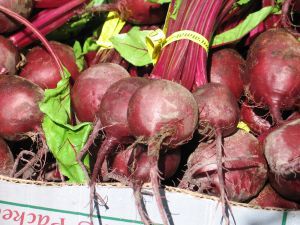Do you love suagr? Do you want to know where it came from? How about how it’s made? Well then enjoy this tasty article!
The term sugar refers to sucrose which is a white crystalline solid disaccaride. Humans use the sucrose to alternate between flavors and properties such as texture and mouthfeel. Commercially produced sugar comes from sugar cane or sugar beet. There are also called monosccarides in sugar which have glucose, store energy which biological cells use and consume. Did you know that under a microscope at low power, sugar will look like a bunch of sloppy shapes? The shapes range from size and in shape. Did you also know that any word containing the ending of “ose” is likely to be sugar?
In english terms, the word sugar originates from the Sanskirt word Sharkara which means sugar or pebble. Sugar was once a luxury but became sufficiently cheaper throughout the years. It forms as a major element in confectionery and desserts as well as sweetening.
Did you know that tooth decay was once seemed the most common health hazard of the intake of sugar? Sugar can cause teeth damage in many ways. The bacteria in your mouth will metabolize the sugar into various acids. Each tooth has a PH (disambiguation) balance. It that balance drops below 5.5, the acids will start dissolving the tooth enamel. The ending results are tooth decay on which cavaties are most likely to form.
Sugar can also cause hyperactivity in some children. This is commonly known as a sugar high or sugar buzz. Studies show that consuming a lot of sugar will raise your metabolizim, thats where the more energy levels start. Did you know that on average, American’s eat or drink about five pounds of sugar a month?
The first production of sugar took place in India. Sugar cane mostly comes from warm climates such as Brazil, China, Pakistan and Australia. The spanish began harvesting sugar cane in 1506, Cuba in 1523. Beet sugar comes from colder climates such as northwest and eastern Europe and northen Japan. The beet-growing season ends with the start of harvesting around September. Sometimes the harvesting continues until March in some areas. The avalibility and the weather all depends on the duration of harvesting. Frost damaged beets are no longer processable.
By the 6th century, sugar cane producers had harvested vegetable materials from the cane in order to collect and filter the juices. They will then treat the liquid by adding lime (calcium oxide) to it. It will then be neutralized. When the juice is boiled, the sediments settle down to the bottom for dredging out. The scum of it will rise to the top for skimming. When the liquid begins to cool down, the liquid will crystallize when stirring to produce sugar crystals. Centrifuges will remove the uncrystallized syrup. Producers are then allowd to sell it as a resultant sugar. Processing it can take place in another factory if wanted.
Sugar beet producers have to wash and slice them, just like a regular beet. They will then extract the suagr with hot water in a defuser. A solution of milk lime and carbon deoxide is then added to precipitate the impurities. Before entering the next stage, Soda Ash may be added to modify the Ph with a sulphur based compound to reduce color formation. The thick juice is then fed to the crystallizers. The liquid will then be removed from the sugar crystals and any remaining syrup is rinsed off with water and the crystals will dry in a granulator by using warm air. From this, a low quality sugar is produced. The liquid that was removed will be known as molasses.
There are also called raw sugars which usually have a yellow or brown color. These sugars are made from boiled clarafied cane juice with a minium of chemical processing. You are mostly like to find raw sugars in cullinary institues.
Sugar cane which is a tropical grass originated in New Guinea. Westeners learned of this sugary food through a course of military expeditions through India. People use to chew on the cane to extract the sweetness from it. By the 18th century, the steam engine was the first to power a sugar mill in Jamaica. Did you know that sugar was one of the most widely traded commodities in the world? In the global dry market, sugar holds a 2% rate. Over the past 50 years, it ranged from being 3 cents a pound to 60 cents a pound.
Well this have been a fun article about sugar? Don’t you feel like eating something sweet now?


